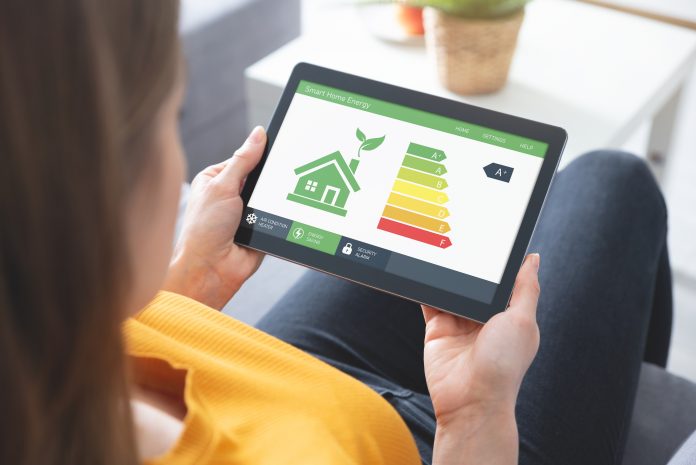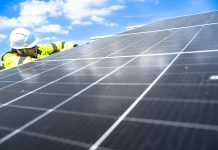Adrian Brewin, Co-Founder of Reid Brewin Architects, provides an opinion commentary about the EU Directive on the energy performance of buildings, including sustainability
In 2002, the EU Directive on the energy performance of buildings committed to improving efficiency, reducing carbon emissions, and limiting the impact on climate change. But just how far have we come in the last 18 years?
Two years ago, the European Parliament approved revisions to the initial directive, in a bid to accelerate building renovation, foster more energy-efficient solutions and drive the infrastructure needed to support our collective, green ambitions.
Of course, while the ultimate responsibility for achieving the EU’s energy and environmental goals is a hotly-debated topic, one would argue that everyone has a part to play – from leaders of multinational conglomerates, to national governments and local councils, as well as individual households.
Sustainability: A priority
As architects, we make sustainability a priority when working on any project – and this narrative is becoming even more prominent in our most recent briefings. Whether you believe the EU’s goals can be achieved by the deadline, carbon reduction is a huge issue for our consideration – and we all need to be working towards a common objective.
While the long-term benefits to our planet are irrefutable, energy-efficient homes and workplaces can also help to improve the quality of citizens’ lives – in addition to aiding economies and society.
By its very nature, a well-insulated construction will have fewer draughts and leaks, reduce the noise from outside, and generally help with the occupants’ comfort – which is great for both physical and mental wellbeing.
Add to that more precision in building, better analysis of what happens once built, greater use of technology to adjust the environment in order to suit requirements, and the result will make us all feel better.
Conversely though, this can create different problems. High-rise apartment or office blocks, which have reduced-opening windows, may have all the ‘bells and whistles’ you need – but does mechanically ventilated air really provide the same benefit as opening the window?
The answer depends on the external environment, what happens when there’s a fault, and whether the maintenance is so complex that it ultimately negates the gain. Low technology solutions might be preferable – despite some element of discomfort for a period – meaning all eventualities should be considered from the outset.
Energy-efficient construction should help to create an environment which fosters psychological wellbeing – so the variables have to go beyond simply adding more insulation, installing the latest HVAC system and triple glazed windows. Climate, lifestyle, use, moments of delight, and the ability to push the envelope all have their part to play and are each part of the mix. Feeling ‘proud’ to live or work in a particular place carries significant weight in the moral dilemma.
While it may be easy to make sweeping statements and assumptions about what makes a structure ‘smart’, it’s important to consider each design on a case-by-case basis, taking into account the human element, and needs of the people who will move into the space once the builders have left.
The EU legislative framework
Aside from wellbeing and sustainability drivers, the EU legislative framework allows for economic benefits for those who strive to achieve a highly energy-efficient and decarbonised building stock by 2050 – but the question still remains as to whether the legislation is enough in time?
In France, for example, there is a tax advantage for private property owners who consider upgrading energy performance – particularly in terms of windows, roofing and boilers – as a key component of the design and build process. However, it’s fairly difficult to meet these criteria.
On the corporate side, particularly in terms of significant industrial and commercial scale, energy efficiency should be a much higher priority. It’s becoming increasingly compulsory to ‘do your bit’ at all stages of the chain, which has meant that we’ve seen an influx in solar panels being used on warehouses, and the reuse of waste heat, as thermal regulations slowly become more stringent. All great initiatives, but more ambition, creativity and sense of urgency are required.
But are wellbeing endeavours and steps to improve our moral conscience, along with the current legislation, enough? Is there sufficient advantage for corporate firms to want to raise the bar and improve their contribution? This is unlikely to happen quick enough without using every device at our disposal.
Both incentives and legislation need to jump to a much higher league otherwise these long-term, overarching ambitions are going to take a long time to achieve. Carbon neutrality was a goal for 2010, and we’re ten years beyond that already – with a long way to go. Maybe the carbon tax is the only way to make this move fast enough.
Unfortunately, humanity must realise that this is going to hurt if we’re going to drive real change. We can’t keep extending this deadline. We’re fast approaching a point where there will be no turning back.
Legislation and incentives can only go so far. The moral argument needs to work harder to convince people to get on board. While I personally, am an advocate for liberty and freedom versus endless regulations, I genuinely believe that society needs to ensure energy-efficient processes become a reality across the board, if we’re going to stand a chance.
What we can do now, is create jobs within new industries to help prepare and ease the way. Get people talking so that energy efficiency is incorporated into our everyday lives so that it becomes normal for everyone – from individual consumers, to large corporate multinationals and governing bodies.
We must work creatively in search of solutions that make everyone embrace the change, including designing buildings that people like to use. After all, a structure will lie empty if it isn’t right for those inside it.












The Government needs to get serious, and there needs to be more incentives. The Green Homes Grant, like the Green Deal, is hopeless because so few contractors are registered with Trustmark – they are already overwhelmed with work. A better incentive would be to make tax-free capital gains for owner-occupiers contingent on them upgrading to at least EPC level C by 2030, and level B by 20240; anyone who sells between 2023 and 2030 at a lower EPC level will have to pay CGT on their house price inflation . A similar incentive should apply to landlords and owners of commercial property: upgrade to EPC level C by 2025 and there will be a pound for pound reduction in their capital gains tax liability.